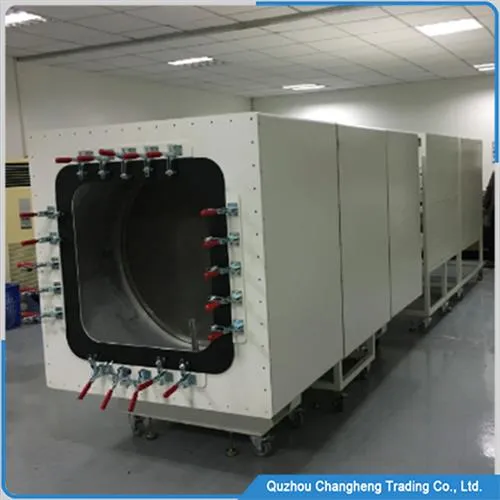
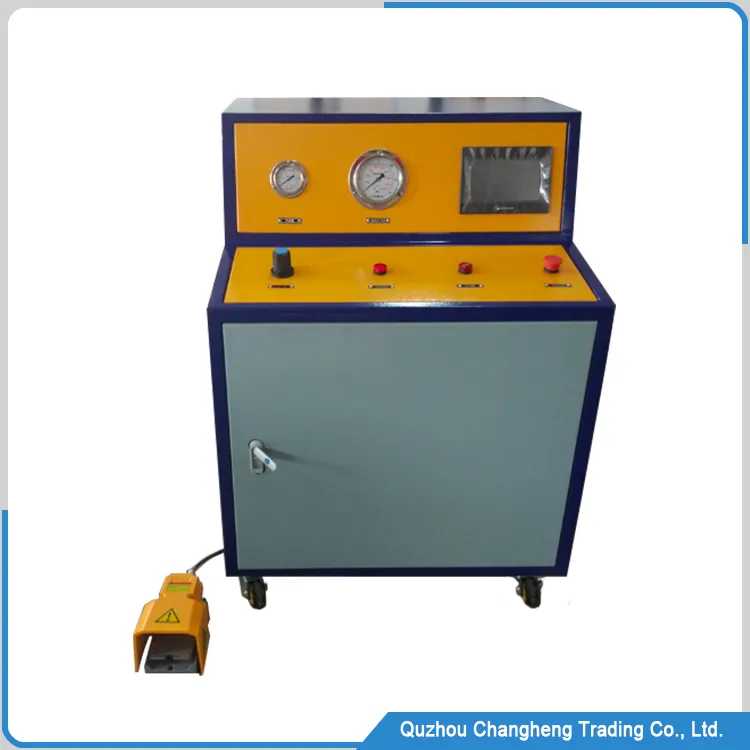
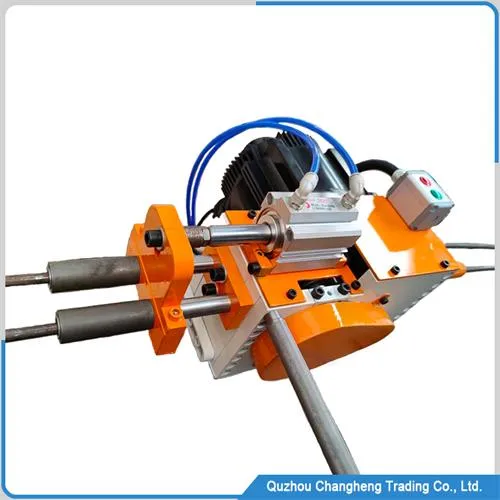
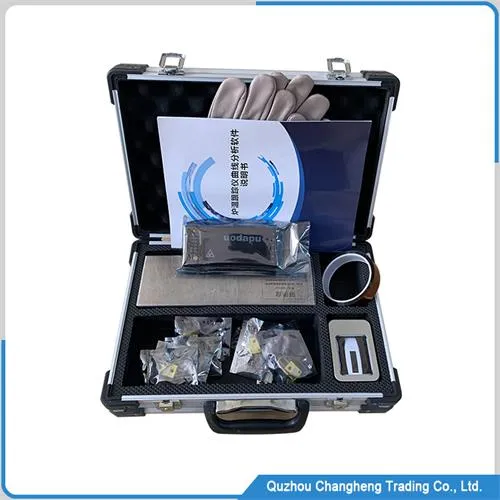
Scrapping of thermocouple breakdown products
1. aluminum vacuum oven in brazing heating, high-temperature breakdown thermocouple tube shell, The display screen of thermocouple conduction temperature is obviously inaccurate.
The atmosphere enters the furnace along with the tube shell, which makes the vacuum of the vacuum furnace drop rapidly. The product is oxidized and scrapped. Generally,
the thermocouple shell is broken down, and the product in the last furnace is obviously fogged or blackened near the thermocouple.
2. Solution: in the brazing process, the record temperature is not stable, sometimes over temperature or lower than the actual temperature in the aluminum vacuum oven
When the above two points are found, the furnace must be shut down to replace the thermocouple or shell. When the thermocouple breaks down, a small amount of air enters the furnace chamber,
and the product turns black, which can be bleached or brazed again. At high temperatures, when the breakdown time of the shell is short and the cross-section is small,
it is necessary to re-braze, and the temperature of the brazing furnace must be 5 ℃ higher than the temperature of the upper aluminum vacuum oven
If the breakdown time is more than half an hour, the breakdown section is large, and the products in the furnace are basically scrapped.
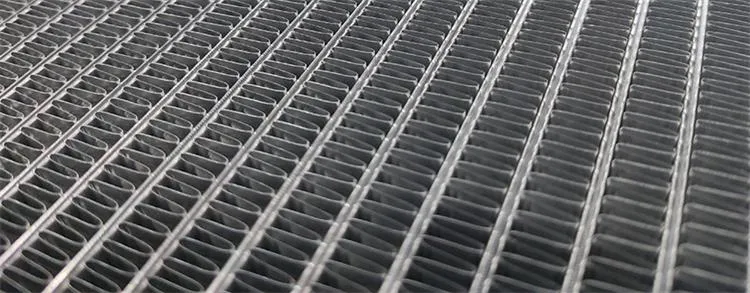
Scrapping of returned oil
1. Phenomenon and reason: return oil refers to improper operation during vacuum in a vacuum furnace, mechanical pump oil enters into the pipe or furnace liner to cause black spots or oxidation of products.
If the oxidation is serious, the product will be scrapped.
2. Solution: in the process of daily operation, the following three situations may cause oil return to take targeted methods.
Firstly, the vacuum pressure in the vacuum furnace is above 8.5e2, and the pumping force of the mechanical pump is less than the vacuum pressure. When the valves are opened, the pump oil enters the furnace along with the suction pipe.
Therefore, there are products in the furnace, and the furnace temperature is below 800. Nitrogen can be flushed in to make the vacuum pressure of the vacuum furnace less than 8.5E 2,
then start the mechanical pump, open each valve for air extraction, and operate according to the specified sequence.

aluminum vacuum oven
Second, when the product temperature in the furnace is higher than the process’s strong cooling high temperature,
the vacuum furnace will restart. When the pressure in the furnace is 2.5e2, two mechanical pumps can be opened at the same time to make the mechanical pumps run smoothly for 3 minutes and then open the valves for air extraction. Operate according to the specified sequence.
Third, when the product is out of the furnace or the furnace door is opened when the furnace is empty, check whether the pressure in the furnace is in atmospheric balance.
Whether it is positive pressure or negative pressure, the pressure in the furnace should be balanced with the atmosphere after opening the vent valve.
Then close the vent valve, and you can start the mechanical pump, open the valves, and open the locking ring. There are two cases of oil return
(1) According to the amount of oil returned before high temperature, the boss after the product is discharged from the furnace is less than usual, and the appearance color is the same as the normal product,
but the product will bulge and be scrapped when the static pressure is about 5p. So the operator pays special attention.
(2) Low-temperature oil return refers to the oil returning at the time of strong cooling or discharging. Black spots on the surface of the product can be wiped off with a green sand belt,
but the internal quality of the product remains unchanged.
aluminum vacuum oven Quench cracked material
1. Phenomenon and reason: the product material is quenched and cracked, and the process card stipulates that 304 material is below 930 degrees.
403 materials below 850 degrees. If the temperature of forced cooling is higher than that of the process card, the surface of the product will be quenched or cracked,
and there is no obvious difference in the surface after quenching and cracking, so the whole furnace has been scrapped.
2. Solution: employees should operate in strict accordance with the regulations. Especially the forced cooling switch, at the end of high-temperature insulation,
the nitrogen gas is automatically flushed, and the fan is automatically started, which causes the whole furnace products to be scrapped. Another situation is that we are tired of operation in the second half of the night.
It is easy to misjudge the furnace temperature and cause the whole furnace to be scrapped due to misoperation. In addition,
the military product 24h25 34 is old material. If the forced cooling temperature is 900 ℃, the product will be seriously bent, so the process card of the military product is set as 800 ℃.
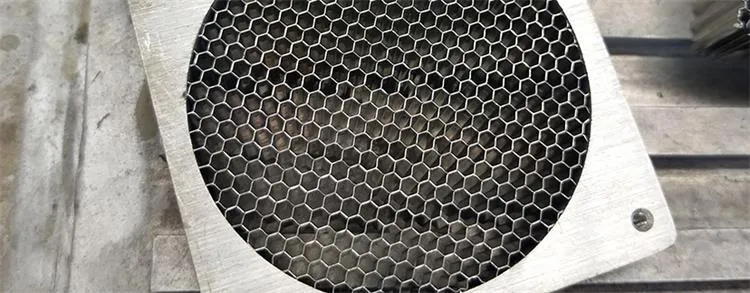
Scrapping
1. Phenomenon and reason: collision scrapping refers to the scrapping of products caused by other items after clamping or discharging.
2. Solution: we can’t touch other objects while we are running. Before entering the furnace, check whether there is a collision between the clamps.
The furnace should be placed carefully and handled with care. The product shall not touch the welding die when it is discharged from the furnace.
After oiling, the product must be balanced when put into circulation. When the large bottom plate is put into circulation after being oiled, the bottom plate shall not touch the vacuum furnace parts.
aluminum vacuum oven Parts displaced and scrapped
1. Phenomenon and reason: the shift of vacuum furnace product parts refers to that after clamping, the brazer pushes the clamped product to the designated aluminum vacuum oven feeding area with a trolley and puts it on the furnace charging a car.
Improper force or touching other objects in the process of pushing the furnace will cause a part of the product to shift. If the product is not found to be scrapped after brazing out of the furnace, the product is called another part of the product displaced and scrapped.
2. Solution: special attention should be paid to the whole process so that the problem can be solved by putting it lightly and pushing slowly.
Product hidden damage scrapping
1. Phenomenon and reason: at present, it mainly occurs in 12.2h. In the process of clamping, ceramic pieces used on the bottom plate are used.
Due to poor quality, after clamping, ceramics are brazed at high temperatures to form a few blocks. In the process of oiling on the plate or film. Caused by-product stacking operation.
2. Solution: we pay attention to the furnace, or correct the ceramic plate or correct the process without a ceramic chip.
Scraping
1. Phenomenon and reason: refers to the clamping ring lost in the brazing process and touches the product sheet or flange, resulting in product scrapping, which is called scraping.
2. Solution: the claws should be relative to each other when entering the furnace, or can be separated by small iron bars or tied with iron wire. In addition,
the position and method of clamping the ring should be considered in the design requirements.
Product verticality scrap
1. Phenomenon and reason: in the high-temperature brazing, the product inclines in all directions, resulting in the scrapping of the product’s verticality. Main reasons for scrapping:
(1) The furnace support was broken, so eight girders were not horizontal.
(2) When the furnace is put into the furnace, the furnace flange and the furnace bar are not straight.
(3) The pillar on the furnace flange is uneven due to the deformation of stainless steel.
(4) The thickness of the welding die is not uniform, so it should be carefully selected when entering the furnace.
(5) The placement structure is unreasonable.
(6) 1440 * (30, 50) * 25, the deformation of the furnace strip is large.
2. The solutions are in the process of discussion and step-by-step.
Scrapping of bonding die products
1. Phenomenon and reason: when the brazing process is high temperature, the copper flux overflows and sticks to the welding mold, which makes the product scrapped.
2. Solution: there are three main reasons for the formation of bonding die
(1) The high-temperature period of the brazing process is too long and the temperature is too high. The partial pressure of nitrogen in the furnace can not meet the requirements, and the partial pressure requirement is 2.0e2.
(2) The aluminum oxide powder is not painted well or the position of the ceramic plate is not correct
(3) Too much copper flux.
A scrap of pellet
1. Phenomenon and reason: it refers to that a certain section of the upper core piece and the lower core piece cannot be combined together in the process of brazing. Or if the film is seriously ejected and scrapped, it is called a scrap of the cartridge.
2. Solution: for 403 material, the effective way is to place the bottom plate upward, that is, the welding seam is upward.
The heating process should not be intermittent. If the above brazing method can not be resolved, the structural design must be corrected.
White edge
1. Phenomenon and reason: it refers to the irregular appearance of the product after brazing, and there is no copper agent in the weld, which is called a white edge.
2. Solution: generally, the white edge is caused by the unreasonable joint gap. But in vacuum brazing, the white edge can be reduced.
The product is not melted
1. Phenomenon and reason: refers to the normal process of brazing, there is a small part of the furnace product that is not melted phenomenon is called product unfused.
2. Solution: the main unfused products are:
- (1) The operator’s door or lower door is not closed or not in place.
- (2) The lining flows under the furnace wall aluminosilicate fiber felt, and the nickel sheet is damaged.
- (3) Thermocouple temperature measurement is not accurate
- (4) The brazing process is unreasonable.
- (5) The quantity of furnace feeding is not in accordance with the regulations.
Blackening after brazing
1. Phenomenon and reason: in the brazing process, vacuum furnace sealing or operation, and other reasons.
The product turns black after being discharged from the furnace. There are two kinds of blackening, high-temperature blackening, and low-temperature blackening.
High-temperature blackening refers to the temperature rising from 1080 to 1120, and self-cooling to 1080 is called high temperature.
From 1080 ℃ self-cooling to 850 strong cooling to 80 out of the furnace is called low temperature. There are two reasons for blackening
(1) In the brazing process, a part of the aluminum vacuum oven (such as the door, door, electrode seal ring, safety valve, etc.) is not sealed.
(2) When the positive and negative pressure is flushed, the nitrogen pressure can not meet the requirements or there is no normal air supply, resulting in blackening.
2. Solution: after blackening can be white. The process is as follows: 1060 heat preservation 35 minutes, can be solved.
But if the high-temperature blackening, depends on the degree of seal leakage. If the loss of copper flux is serious, the product will be scrapped. However,
if the vacuum leakage time is short, it can be re-welded. However, the re-welding process temperature must be 5 degrees higher than the previous heat, and the re-welding process temperature-time curve is specified.
Scrapping of carbon rod discharge products of connecting block electrode
1. Phenomenon and reason: in the heating process, the contact surface of the connecting block electrode carbon rod is loose, resulting in a strong arc,
and the electric shock scrapping of products around the arc is called discharge scrapping. After discharge, it was not found in time, so the contact point was disconnected,
resulting in high local temperature in the furnace and serious copper injection. The temperature at the other end is very low, and the product does not melt.
2. aluminum vacuum oven Solution
(1) Check the carbon rod connecting the block of the furnace liner electrode for each furnace. If it is found that the hair is less than 2 / 3 or the hair is serious, it should be replaced in time.
(2) In the furnace must be careful, the furnace and products can not touch or vibrate the heating parts.
(3) At the end of each furnace brazing, the claws and impurities in the furnace must be cleaned. Vacuum every week. Open the upper and lower doors every three weeks to open the fan.
The fan is required to rotate for 3-5 minutes, and the upper and lower doors should be opened and closed three times within 3-5 minutes. Make sure the furnace is clean.
A scrap of copper spraying
1. Phenomenon and reason: in the process of high-temperature brazing, the copper flux in the heating workpiece material forms a small part of fog on the container,
which is not controlled in place, resulting in copper material spraying on the product or gathering a certain part of the product, resulting in the scrapping of the product.
2. aluminum vacuum oven Solution
- (1) The thickness of flux copper should be reduced reasonably.
- (2) In the high-temperature section, the partial pressure is stable at (2.5e2).
- (3) Product placement is reasonable.
- (4) Selection of brazing process.
Uneven scrapping of products
1. Phenomenon and reason: in the process of high-temperature brazing, the product has a certain degree of deformation. After leveling,
if the plane fails to meet the technical requirements, it is called uneven scrapping. At present, there are a few uneven scrap plate products. But 6.7pn was more.
2. Solution: it needs technical improvement.
Emergency method for power failure
1. Phenomenon and reason: when the vacuum furnace is brazing normally, a power failure occurs suddenly.
2. Solution: operate as follows.
1) First, close the angle valve of the vacuum furnace mechanical pump.
2) Turn on the standby tap water or start the standby diesel engine to supply circulating water.
3) When the temperature in the furnace is lower than 1120, it must be naturally cooled to about 800 ℃ according to the real-time temperature in the furnace (the time is determined by the actual temperature table of the vacuum furnace after power failure).
4) Nitrogen flow and pressure are the same as above.
5) No matter how long the power is cut off, the nitrogen in the furnace must be kept above 0.5pa, and if it is less than 0.5pa, it must be replenished in time. Until it cools to 80 degrees.
6) When the furnace temperature is below 800 ℃, nitrogen can be directly injected for protection.
7) After the power supply is normal, according to the real-time temperature in the furnace, operate according to the normal procedure.
Sudden stop of gas during normal brazing
1. Phenomenon and reason: during normal brazing, the inner gas pipe or air pump fails. After the gas is stopped, each valve of air extraction is closed automatically, and the vacuum channel is closed automatically.
2. aluminum vacuum oven Solution
(1) First of all, the operator runs above the valves in the brazing vacuum furnace in the high-temperature section,
and directly pulls the valve stems to the appropriate height by hand. Lining with iron bars or carpentry. At the same time, restart the mechanical pump and roots pump at one time
(must be operated by two people), and operate according to the operating regulations to prevent oil return.
(2) Fix the tracheal fold of the lower door to make the lower door fall down slowly.
(3) Use the same method to solve the problem in low-temperature vacuum brazing furnaces.
(4) After the gas supply is normal, the lower door can be judged according to the gas stop time, and the time of high-temperature brazing can be increased if the falling time is appropriate.
If the gas cut-off is advanced, a 29.2 welding die can be placed on each valve in advance. After this gas stop, the 29.2 welding die supports each valve.
The vacuum shield can be brazed continuously. So according to the above measures. In the natural cooling of brazing, the effect of gas blocking is not obvious. However,
in heating or high temperature, the operator must judge and select the operation according to the time of blocking gas.
Emergency method of circulating water shutdown
1. Phenomenon and reason: the circulating water supply is suddenly stopped due to a water pump and other reasons.
2. Solution: if the alarm rings after the circulating water stops, you must immediately go to the water pump room to find out the cause.
When the water can not be supplied for 3 to 10 minutes, the diesel engine must be turned on or the main tap water valve must be opened to supply water.
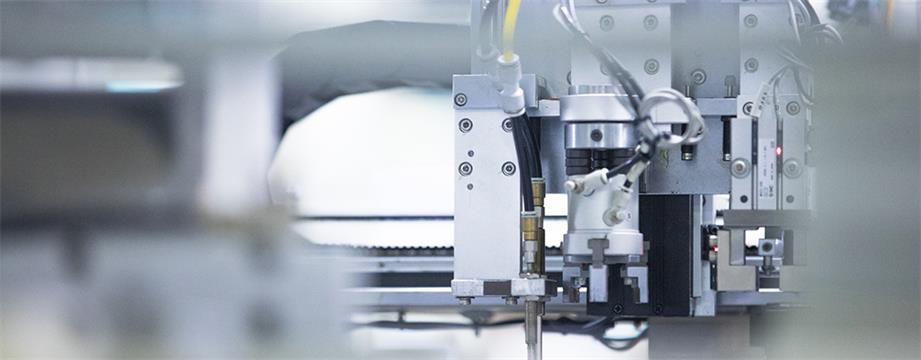



 wechat
wechat